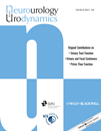Women's experience with severe overactive bladder symptoms and treatment: Insight revealed from patient focus groups†
Heinz Koelbl led the review process.
Abstract
Aims
Research has focused on treatment of overactive bladder (OAB) symptoms in women with the goal of cure. The objective of this study was to assess women's perceptions of their OAB symptoms, treatment experience, and outcomes by conducting patient focus groups.
Methods
Women seen in our academic center female urology referral clinics were identified by ICD-9 codes for OAB symptoms and recruited to participate in one of five focus groups, totaling 33 patients. Non-clinician moderators conducted the focus group sessions incorporating topics related to patients' perceptions of OAB symptoms, treatments, and outcomes. Data analysis was performed using grounded theory methodology.
Results
Qualitative analysis yielded several preliminary themes: impact of OAB on quality of life, strategies to control wetness, medications and side effects, and triggers. The majority of focus group participants reported only a partial response to medication and other physician-recommended treatments for OAB. Therefore, they developed self-reliant personalized strategies to improve their quality of life. These strategies included fluid restriction, preventive toileting, and, most importantly, the use of incontinence pads.
Conclusions
The majority of the women who participated in the focus groups reported only a partial response to medical and other treatments for OAB. As a result, they developed personalized self-management strategies to improve their quality of life. Although most studies addressing the treatment of OAB aim at curing the condition, such a strategy may be unrealistic. Applying a chronic care model that uses a patient-centered symptom-management approach to OAB may optimize patient outcomes and improve quality of life. Neurourol. Urodynam. 30:1295–1299, 2011. © 2011 Wiley-Liss, Inc.




